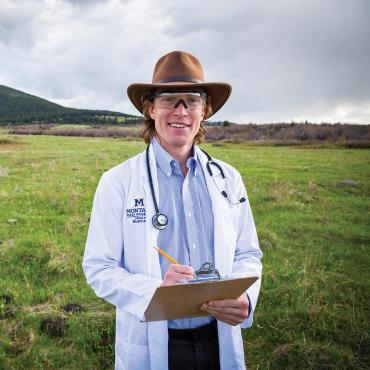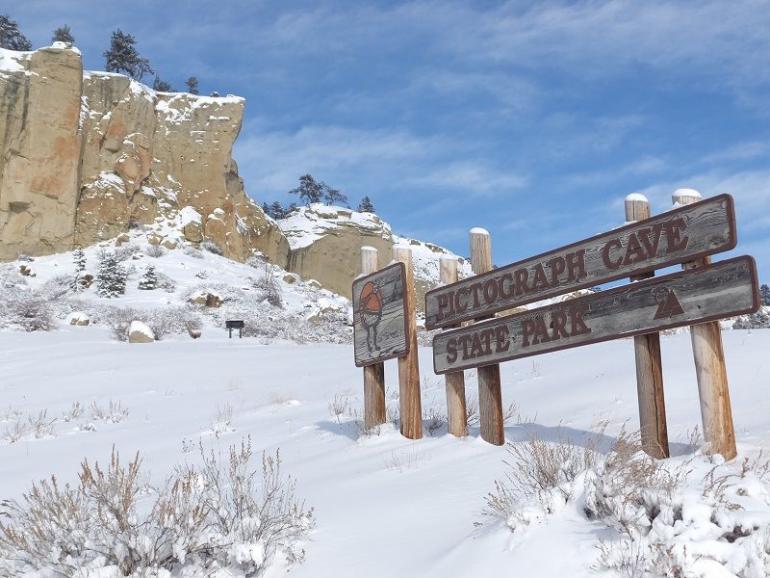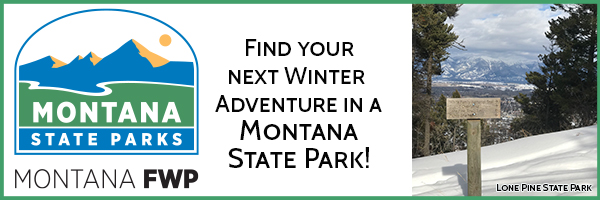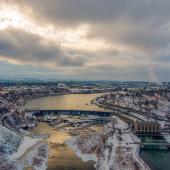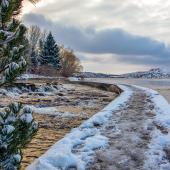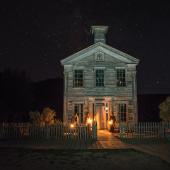Road Trip: Pictograph Cave State Park
Two hours east and a world away.
We get it—you live in southwest Montana because you love playing in the mountains or on the rivers, and you’d wince at the prospect of driving farther east than Livingston for anything resembling an outdoor adventure. Well, Bozemanites, we’ve got news for you: eastern Montana has some hidden gems that will certainly change your perspective on the prairie country, and may even convince you that—dare we say—Billings would actually be a cool place to live. But don’t take our word for it; make a trip out there yourself, starting with a stop at Pictograph Cave State Park to marvel at some of Montana’s oldest historical remnants.
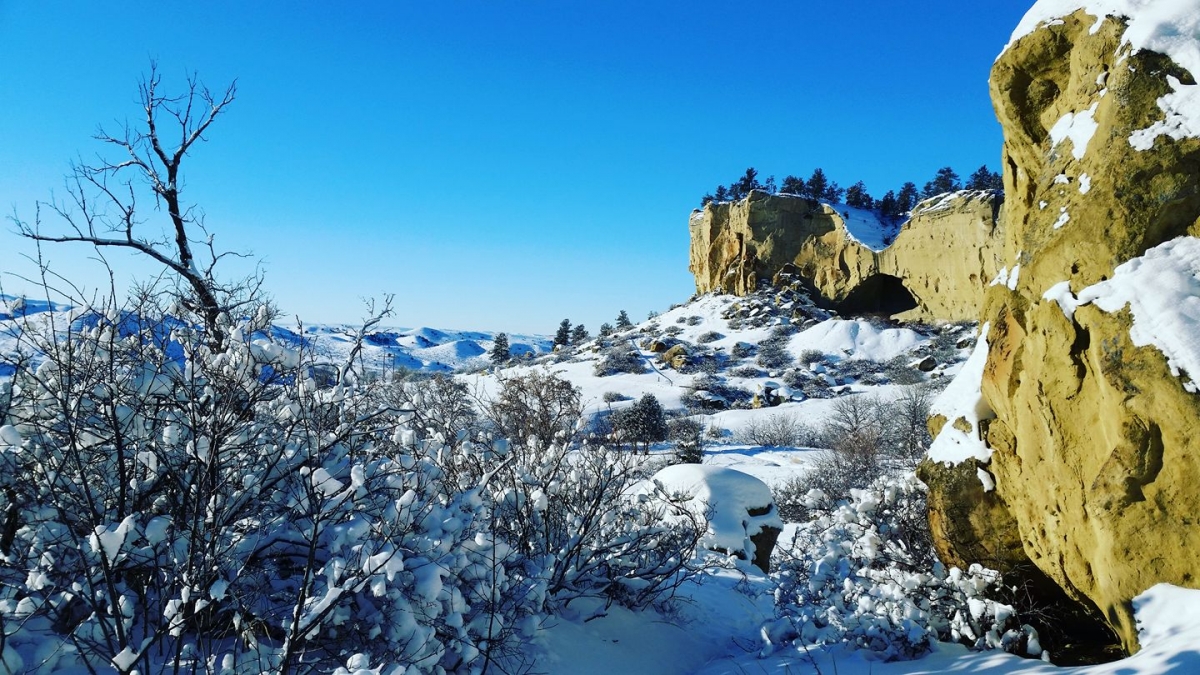
These caves, eroded from sandstone cliffs by water and wind, provided hidden dwellings to hunters on the lookout for pronghorn grazing in the drainage below. Tens of thousands of artifacts—including tools, weapons, and instruments—have been unearthed among these outcrops, and over 100 pictographs tell a thousand-year story about the changing inhabitants of this land. The caves face out toward the morning sun, so get there early for the best light, and bring some binoculars for viewing the rock art. Bring a picnic lunch and enjoy the park's beautiful seating area beneath a cottonwood canopy.
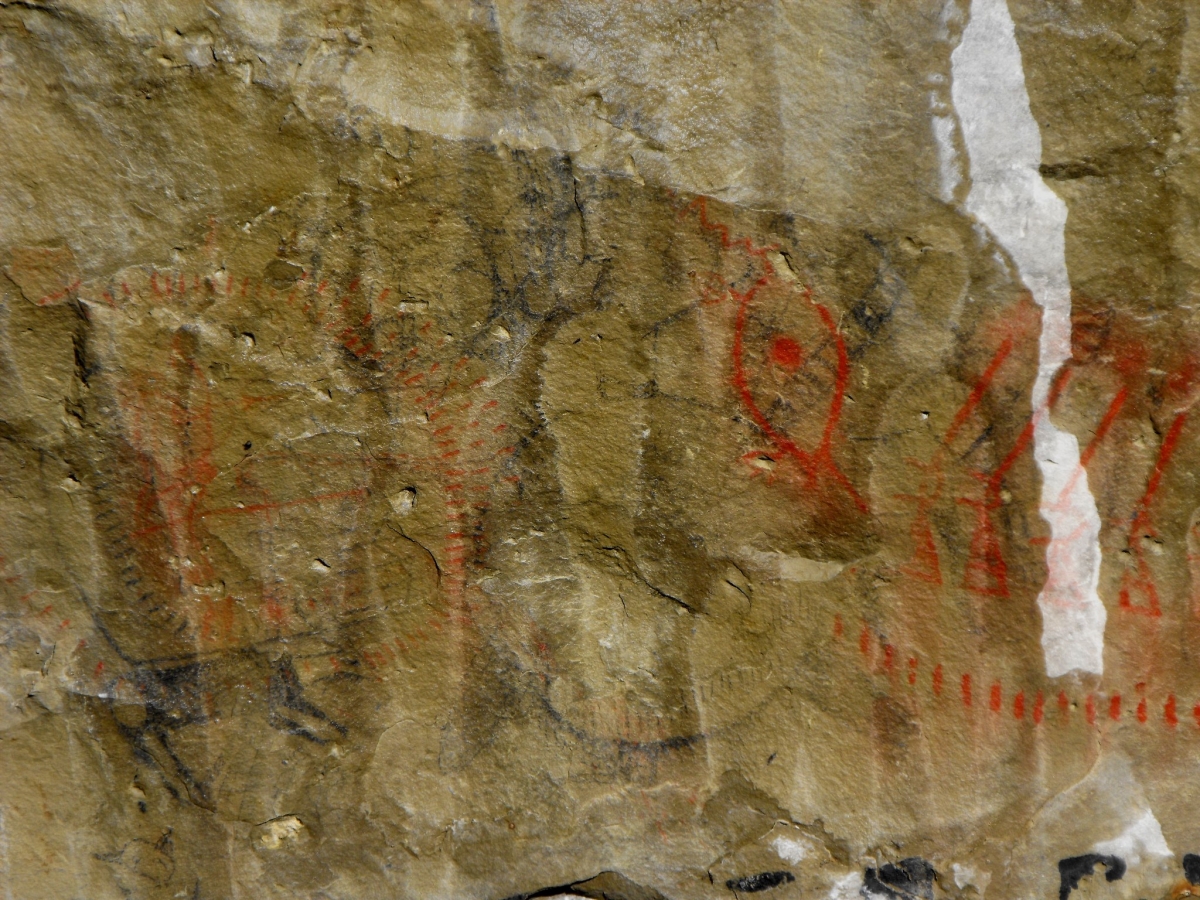
Make sure to stop in the Pictograph Cave Visitor's Center and check out their exhibits on the artifacts found along these cliffs. You'll see the progression of materials used for tool building from flint, to chert, to iron. While most of Montana's historical monuments hail from the past few centuries of westward expansion, some artifacts found in these caves date back nearly 10,000 years. Needless to say, most of the artifacts found here predate the first European contact of North America. It's rare to find such a concentrated, well preserved, and chronologically expansive time capsule of North America's early inhabitants, and seeing the artifacts in situ yields a powerful connection that can't be matched by merely browsing through glass in a museum.
After steeping yourself in the history of these golden bluffs, head back toward town (or, the city, rather) and pull off at the Four Dances Trailhead, a BLM recreation area. Just a short walk from the parking lot you’ll find yourself strolling along a tall bluff, hundreds of feet above the Yellowstone River, with views across Billings toward the famous rimrock. If you're looking for exercise, this network of trails offers miles of possibilities for mapping a run.
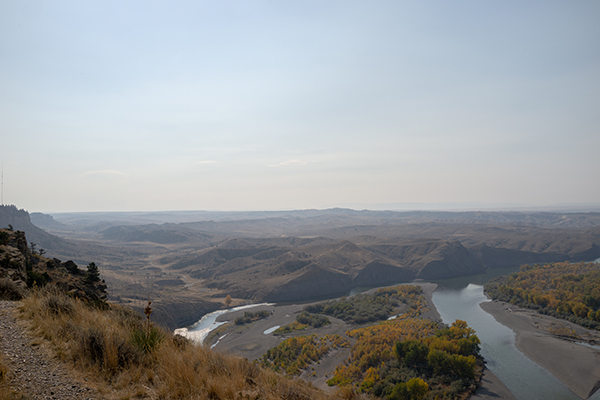
If you're keen on two-wheeled travel, make sure to check out Acton Recreation Area—another BLM managed zone—20 minutes north of Billings on Hwy. 3. These trails rival Copper City in both quality and abundance, and we're admittedly jealous of Billingsites (or Billingsians?) who call this place their local digs. Acton could be covered in snow mid-winter, but keep this spot in mind come spring.
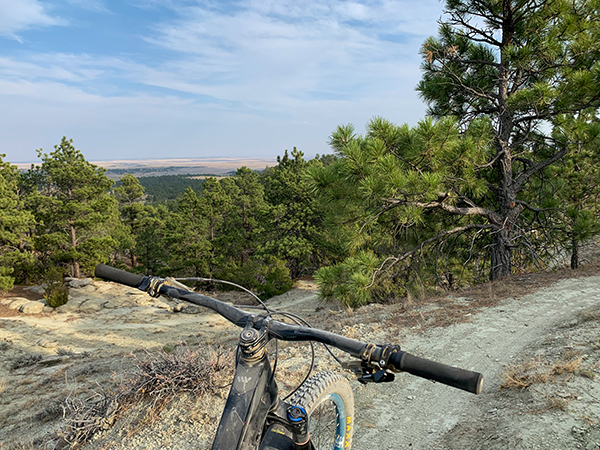
Camping is not allowed at Pictograph Cave State Park, but is permitted throughout Acton Recreation Area—just be mindful of private land boundaries. Several sites near the parking lot will accomodate trailers, but if your vehicle has decent clearance, peruse the gravel roads for a secluded site among the boulders. If you're looking for camping closer to Billings, check out Bundy Bridge FAS or Castle Butte. To get to Pictograph Cave State Park, exit off I-90 onto Hwy. 87 near downtown Billings. Head down Coburn Rd., which dead-ends at the park's entrance.

